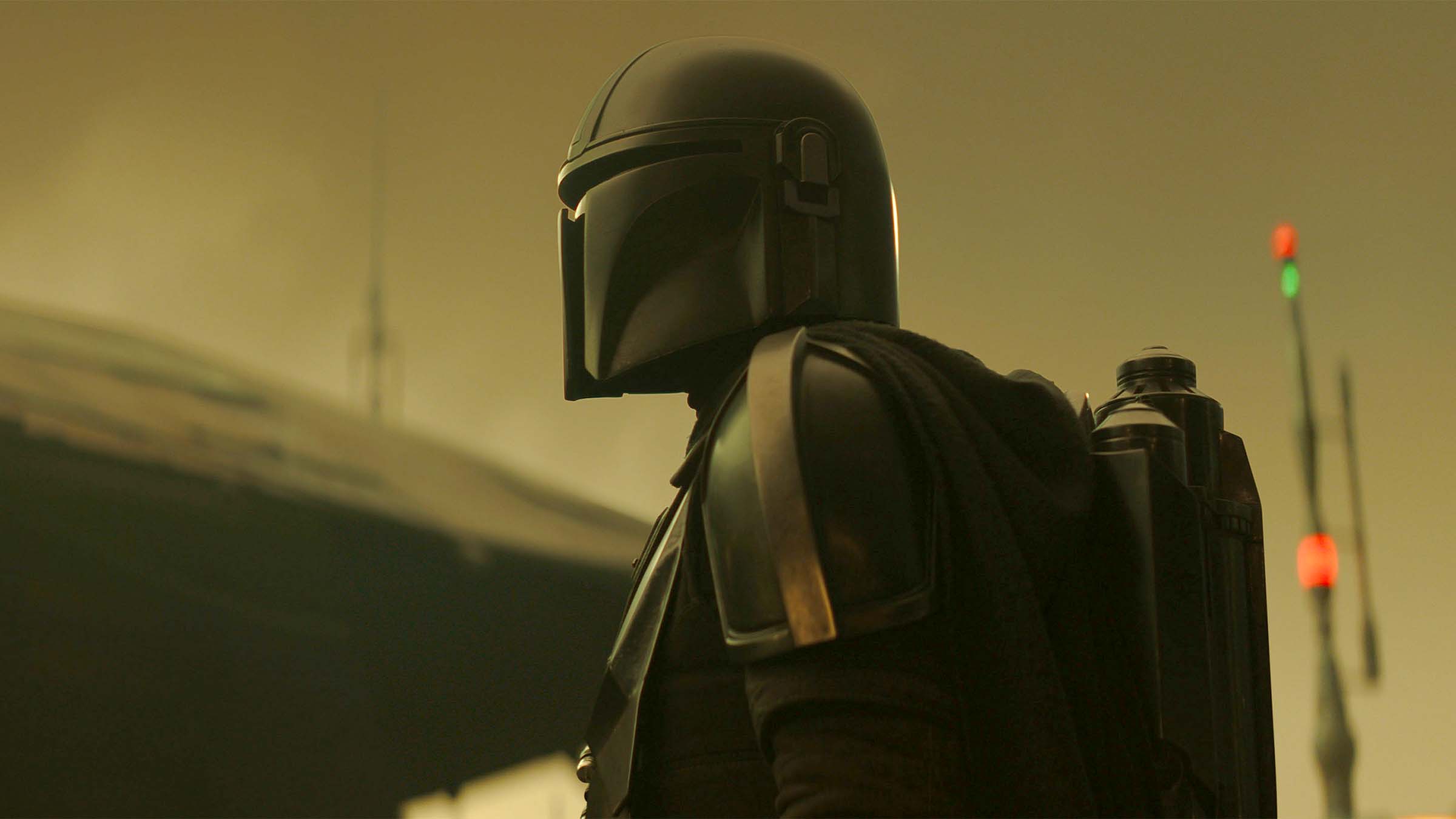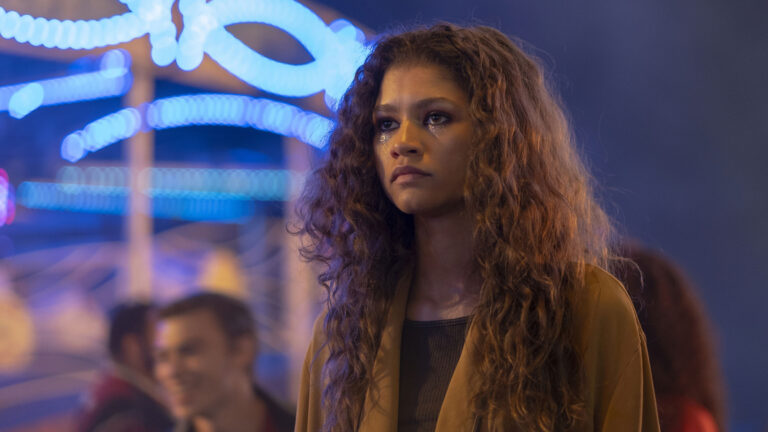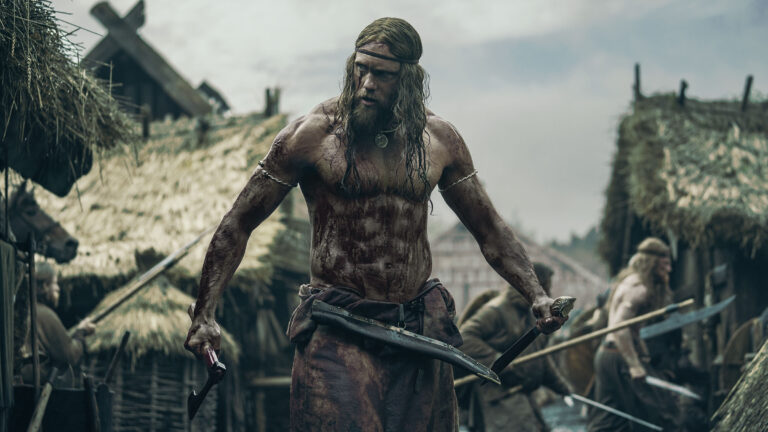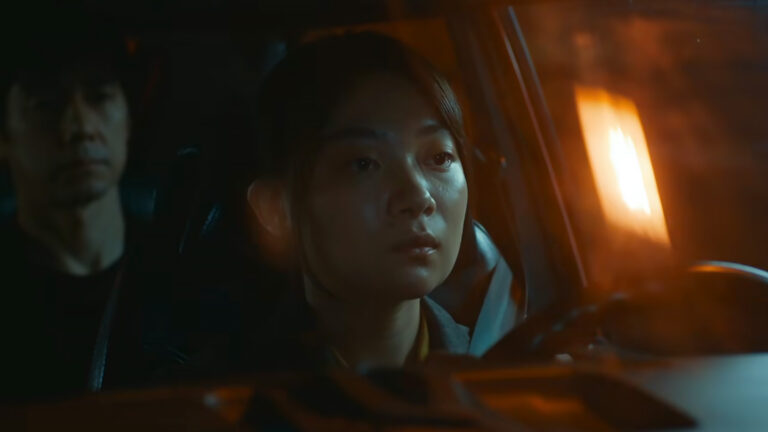Today we’re speaking with several of the editors from The Mandalorian—specifically, the editors of the four episodes that were nominated for Emmys for Outstanding Single-Camera Picture Editing for a Drama Series.
Those editors are: Dylan Firshein and Erik Jessen who edited Chapter 11 – The Heiress; Andrew S. Eisen, ACE, who edited Chapter 13 – The Jedi; Jeff Seibenick who edited Chapter 15 – The Believer; and Adam Gerstel, who edited Chapter 16 – The Rescue.
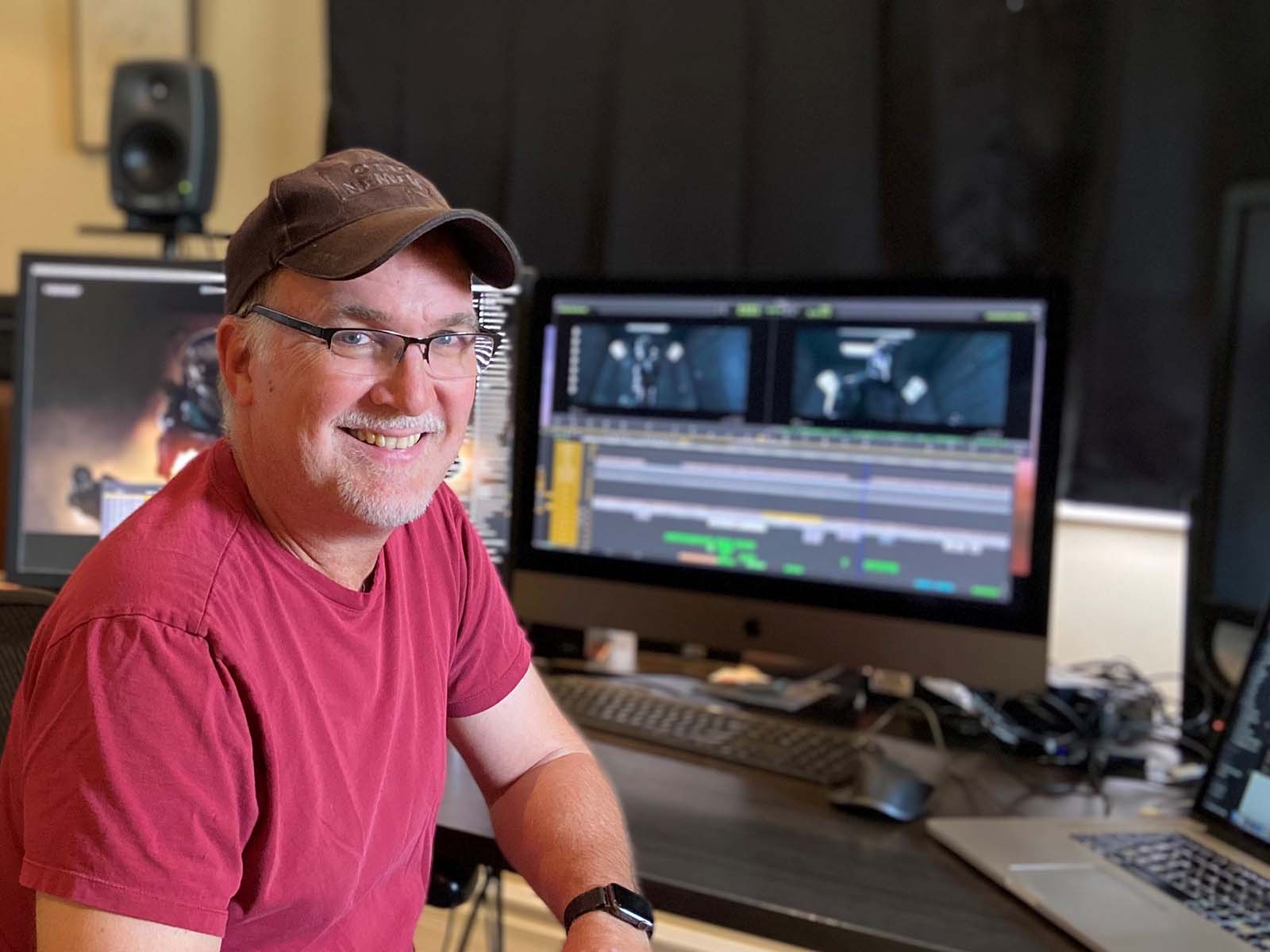
Dylan Firshein was a first assistant editor on Solo: A Star Wars Story. He’s been an associate or additional editor on projects like Tron: Legacy and Valkyrie. And was editor on the feature film, This is Happening.
Erik Jessen has edited features including Holmes and Watson and the TV series Allegiance. He was an additional or associate editor on John Carter and Where the Wild Things Are. Prior to that, he worked as an assistant editor on films like Sky Captain and the World of Tomorrow and X-Men: Days of Future Past.
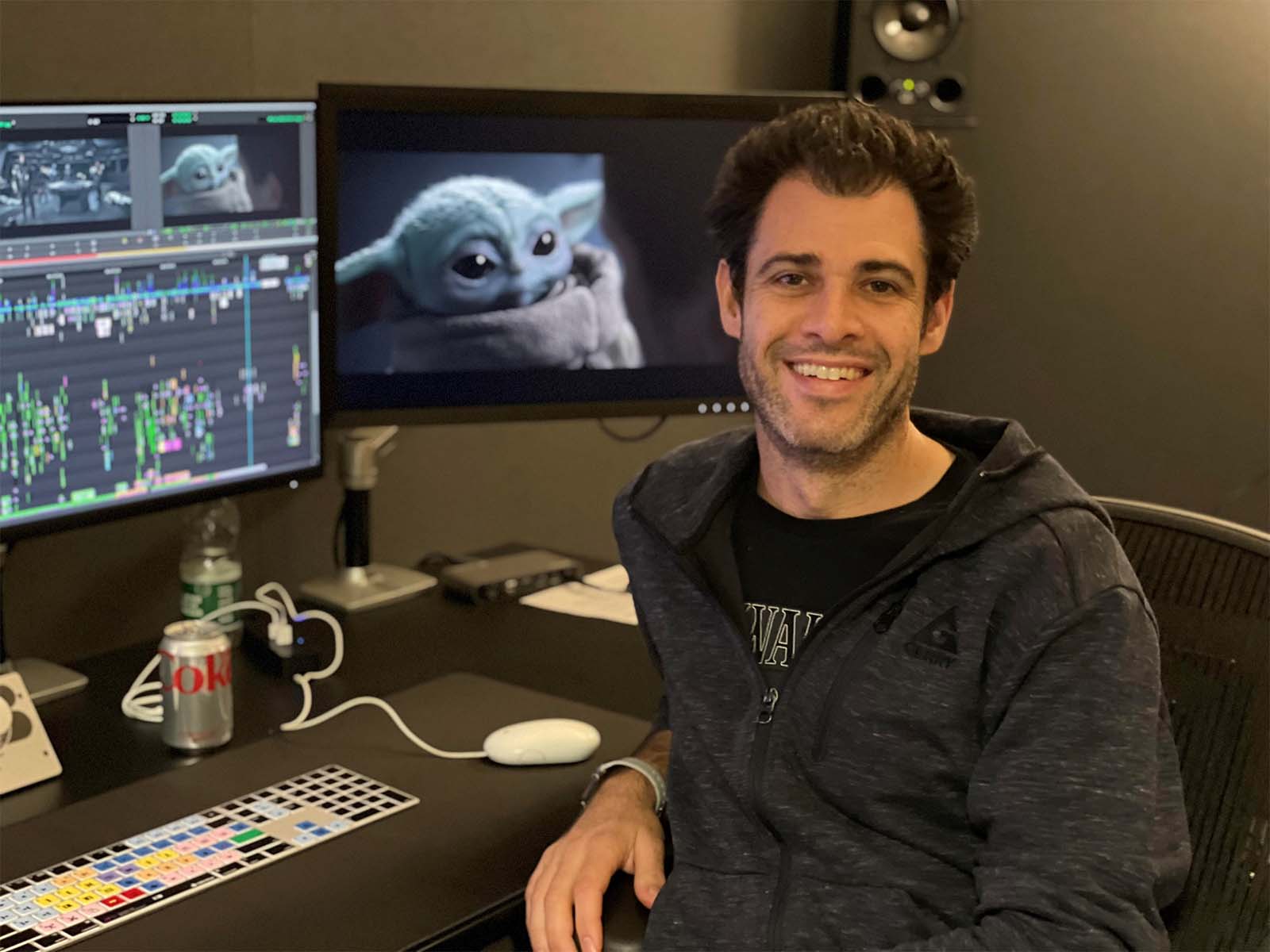
Andrew S. Eisen, ACE has cut films like The Imitation Game and The House with the Clock in its Walls and Guardians of the Galaxy: Inferno. He was an additional editor on Guardians of the Galaxy Volume 2 and an associate editor on The Hateful Eight.
Jeff Seibenick was an editor on the TV series’ Cobra Kai, Dead Inside, Eastbound and Down, Parks and Rec and the pilot of Young Sheldon. He also cut the features The Legacy of a Whitetail Deer and Cardboard Boxer among others.
Adam Gerstel edited the 2019 film The Lion King, Transformers: The Last Knight, was a second editor on The Jungle Book, and a previs editor on Star Trek Into Darkness.
Listen while you read…
HULLFISH: I think a lot of fans know about the production of the show and that a lot of it is shot on this thing called The Volume. What do you think the ramifications are of using this tool in post? What are some of the benefits and challenges?
JESSEN: Not exactly in post, but in pre-production, it forces us to have a complete previs pat, because The Volume has to be planned out weeks in advance, and they have to have those backgrounds completely rendered out.
SEIBENICK: Which are built and designed and rendered in a game engine, like a video game engine. So it’s all 3D, and it works with the cameras and the mo-cap so that when the camera moves, the backgrounds shift in the screen; it’s like a big 3D virtual background.
EISEN: And when we get our footage back, it looks like dailies that were shot on location, ultimately for us, that’s how it looks. So there’s a lot less blue screen or imagining that we have to deal with when we get our footage back, and same for the actors on the set.
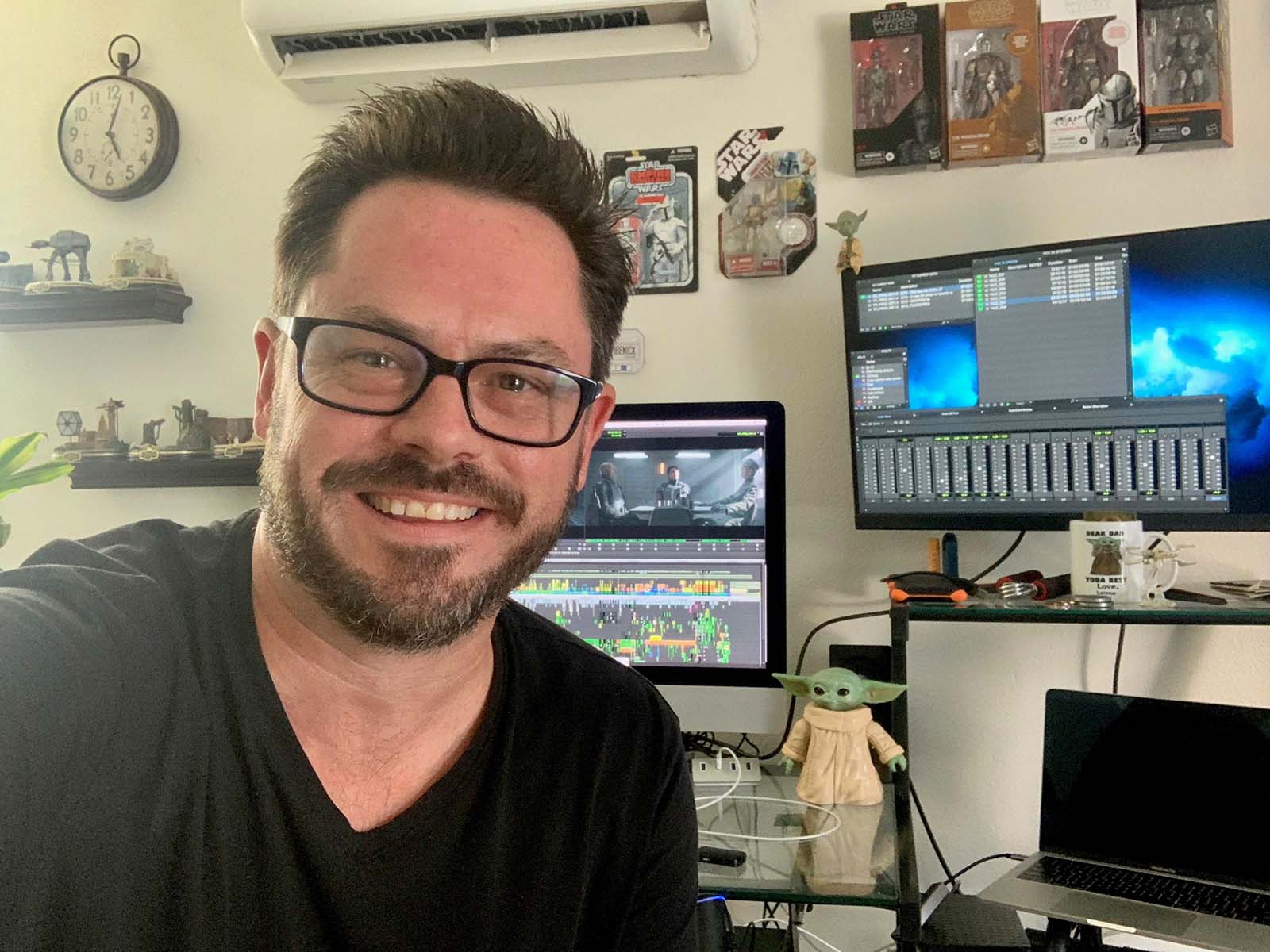
GERSTEL: In terms of prepping it, because of The Volume, it gives us the opportunity to be a part of the process as early as previs. Where usually other picture editors are not involved heavily in previs, that’s not the case with The Mandalorian. We are actually on from as early back as storyboards and animatic cuts moving into previs in prep for the shoot. A lot of story, script, blocking, pacing, rhythm issues are actually being solved during the previs phase in pre-production.
JESSEN: It’s not always easy, but it is quick to get a reshoot when needed. I remember the Jawa shoot on season one; they were able to put up the background and get something shot quickly.
GERSTEL: I remember there was a day on season two where we had three or four different episodes, all shooting pickups. They were just changing the background between episode to episode, and it was fun to watch.
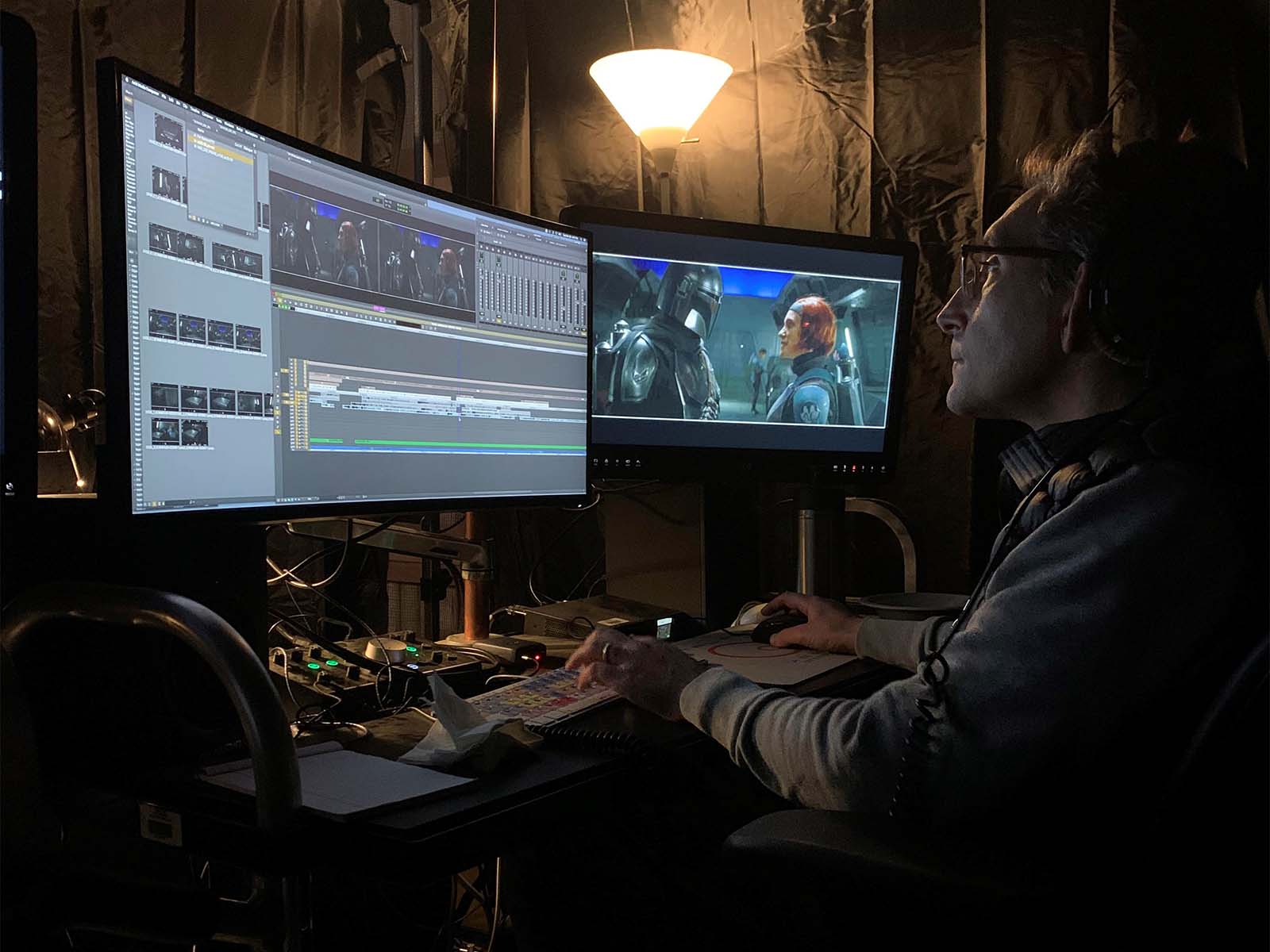
EISEN: John Favreau has a very interesting philosophy, and one of the ways he’s able to keep the show feeling real and feeling like it was shot in the seventies, as opposed to 2020, is that he doesn’t mind little imperfections. If there was a mismatch in lighting or even a shadow, he almost embraces that, especially where visual effects are concerned, because he doesn’t want these to look so perfectly smooth and fitted together. He wants it to feel like, oh, we are really there. That’s part of what intrinsically makes the show feel real, even though it’s a very subconscious thing.
HULLFISH: The Star Wars franchise is well known for using wipes as transitions. The Mandalorian continues that tradition. Is there a rule about using them?
SEIBENICK: I started using the wipes on the very first thing that I ever cut on the show, which was previs episode 101. It’s part of Star Wars, it just happens, and now they’ve pretty much written them into the script, and we use wipes to transition between locations and times.
EISEN: They don’t dictate what kind of wipes and not always where sometimes we can decide to put them in, and then they either stay or they don’t; they usually just stay.
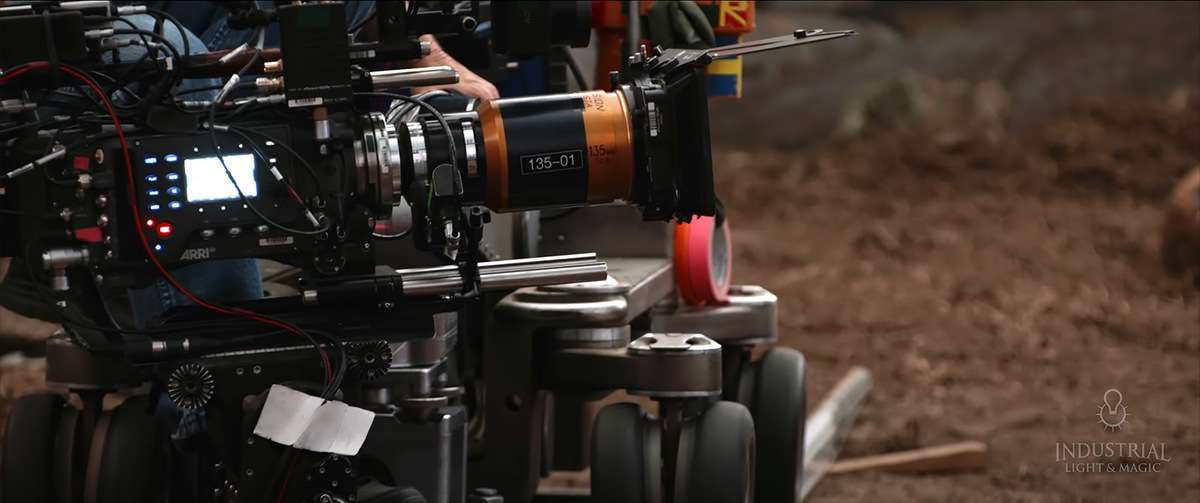
GERSTEL: Yeah. I don’t think there was any that we took out. It was just what felt right in the assembly.
SEIBENICK: There’s never been a note on a wipe.
HULLFISH: How were episodes chosen for submission consideration?
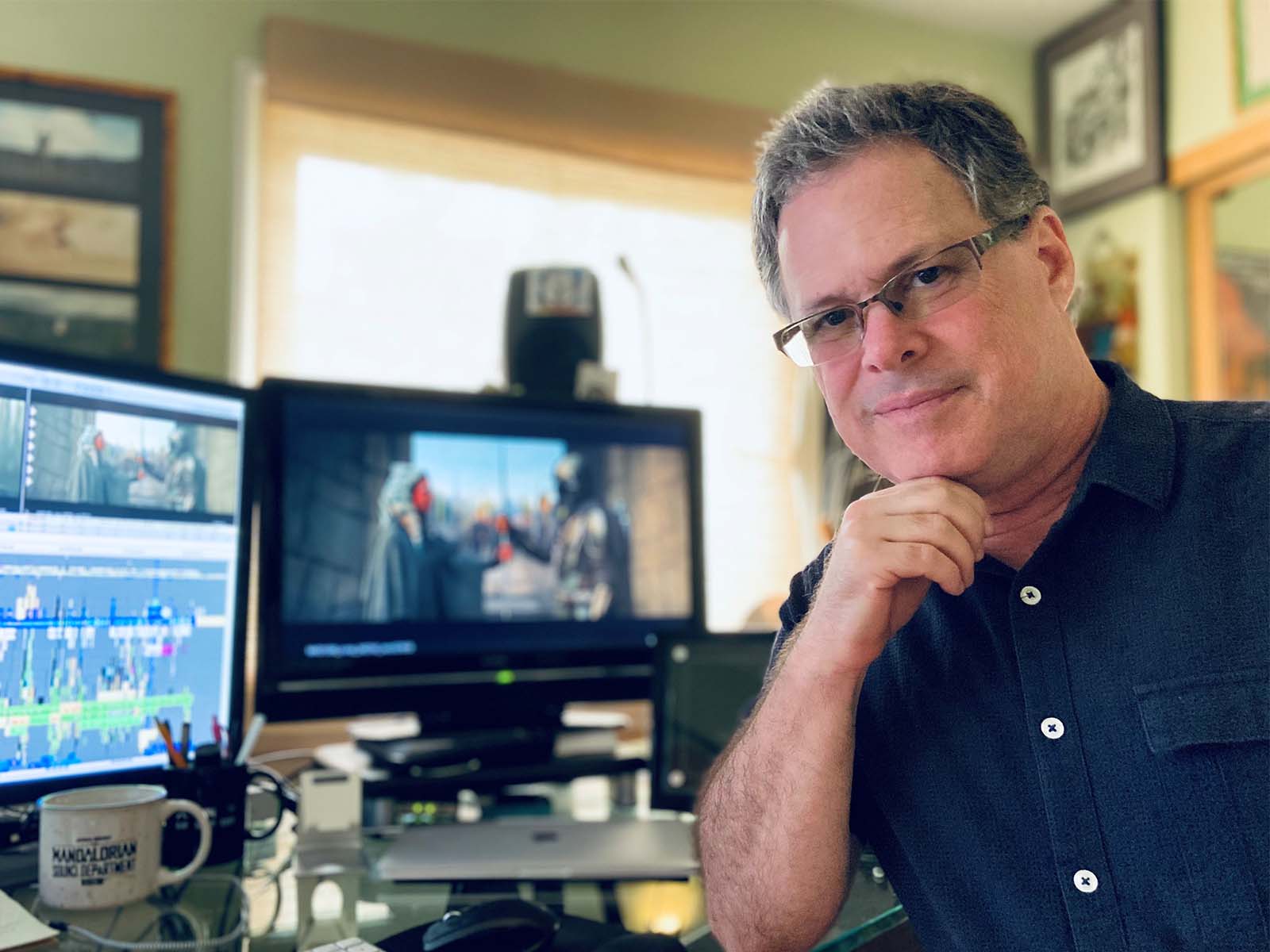
EISEN: They asked us which ones we felt we wanted to showcase for ourselves.
GERSTEL: I picked The Rescue (Chapter 16) because of the challenges involved with the cross-cutting of multiple different storylines, all trying to meet up and trying to shape a reveal at the end where it’s not supposed to be the climax of the episode, but yet is a big moment.
There were a lot of editing challenges to make all that work together. It felt like a thing that I worked hard at.
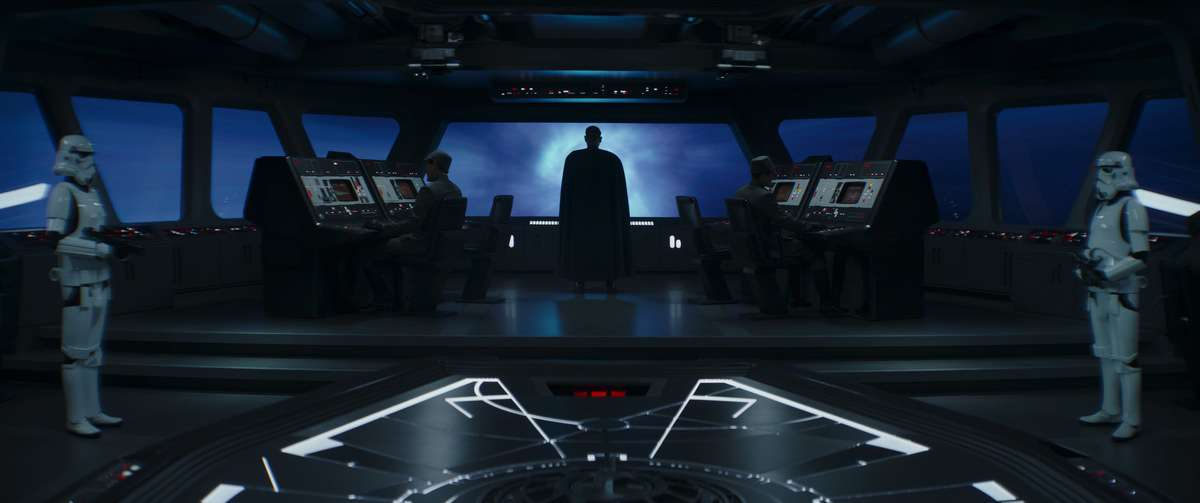
EISEN: It’s tough making that decision because you do have multiple shows, and they’re all your babies that you worked equally as hard on. In my particular case, I loved The Tragedy (Chapter 14), which was directed by Robert Rodriguez. It’s the episode where the baby is brought to the rock and eventually kidnapped. As far as the episode I chose, The Jedi (Chapter 13), it had a very unique style to it. Dave Filoni, who was the director, chose to channel Akira Kurosawa, being inspired by that look, and it dictated how the editing went as well.
There was also a lot of cross-cutting between stories in that, so altogether, it felt like the right one for me to put out there because it is different than the others and stands out more.
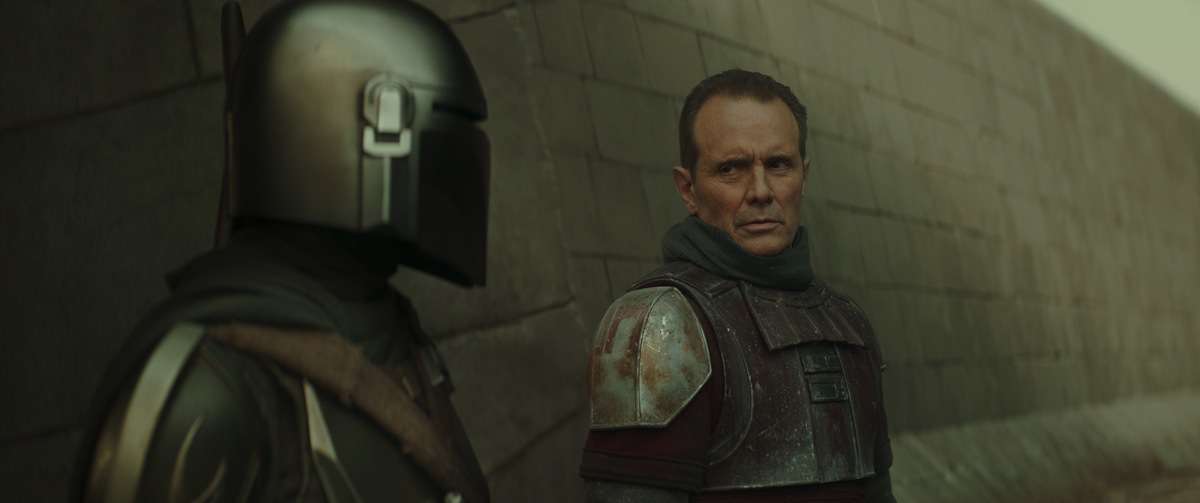
SEIBENICK: The Siege (Chapter 12), which was another one that I cut in season, two was very intensive in post because that episode changed so many times from previs to production. We saw the previs cut, and then we changed it drastically, and then they shot that script, and then they saw it and thought different ideas would be better for leading into the other episodes.
They ended up reshooting a whole chunk of the second half of the episode, which also had to seamlessly interweave with the beginning and the middle. Long story short, there was a lot of fancy footwork that took place on that episode, but at the end of the day, nobody would ever know except for us because it plays so seamlessly.
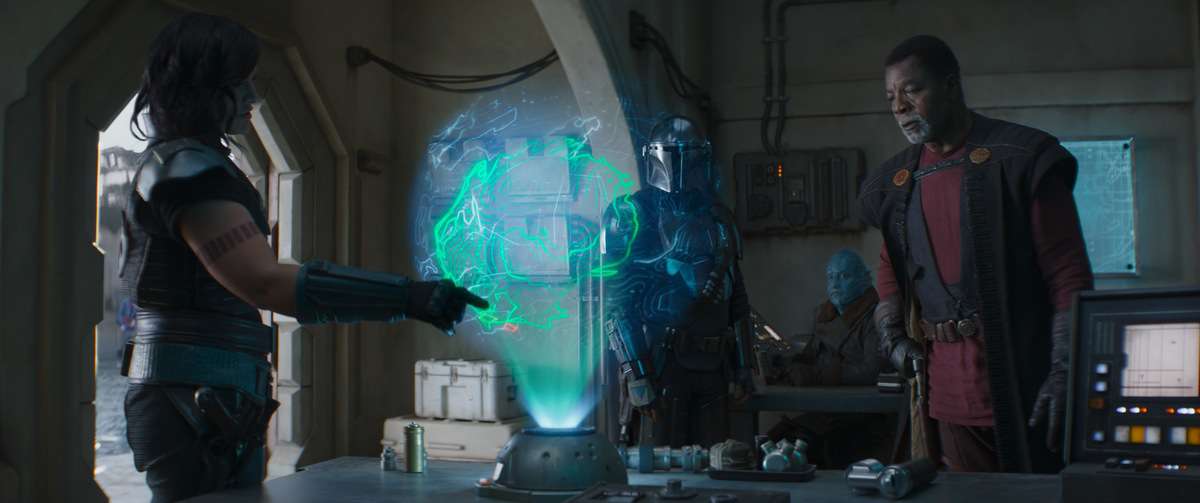
It’s an exciting episode, but that’s not what I wanted to choose for submission. I did a lot of work on it, sure, but so did everybody; the one I chose was The Believer (Chapter 15); I liked that scene between Hess and Mando and Mayfield played by Bill Burr because it was a chance to get to cut faces and performances and build tension between subtext and dialogue. There was also the intercutting with the action of them escaping and going off on the ledge, and I thought that was really fun because that took a lot of creativity and collaboration to get that all to feel as good as it does.
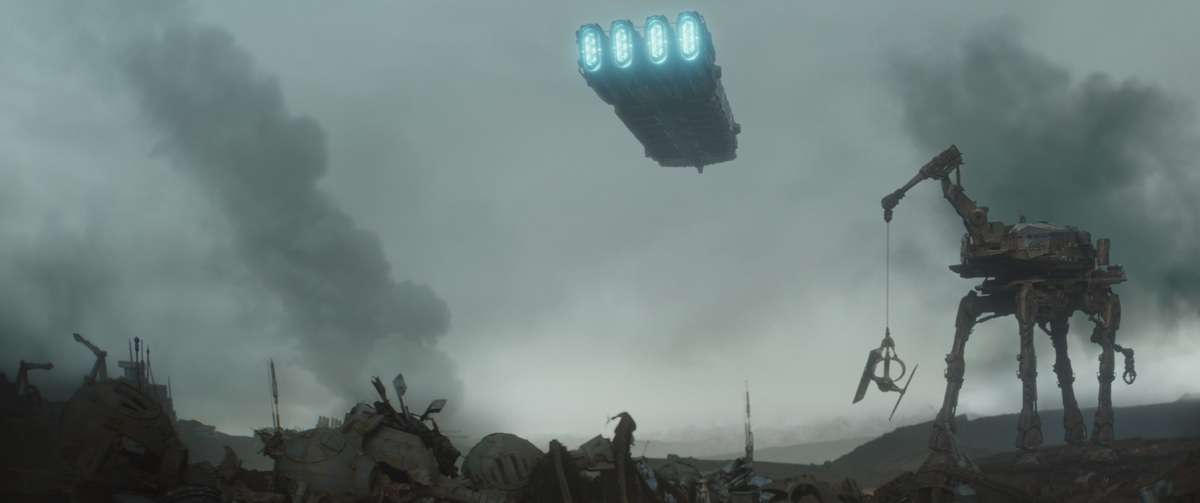
HULLFISH: When you guys vote on editing nominations, what are some of the things that you look for?
GERSTEL: Editing is so hard to judge because you don’t know what was involved in the editing room, and it’s hard to separate editing and directing, the two go hand in hand, but I’d say that’s where the performances meld; it’s where you almost forget about the editing. I think those are the ones that are the most successful.
SEIBENICK: Yeah. It’s easy to see bad edits, but it’s really hard to judge good ones because it’s absolutely invisible.
EISEN: Ideally, I’ve watched as many of them as I can, and the ones that I resonated with the most, I have to assume there was something really well done in editing that brought me in. Whatever reason that is—either it made you laugh, whether it made you cry, whether it made you glued to the screen—you’re not sitting there next to them, so you don’t really know what went into it. You really have to judge it on the merits of the show itself.
JESSEN: There are so many great shows this year that I personally feel guilty that our show has got so many nominations, but at the same time, what I think is somewhat unique about our show is that the directors stay on for much longer than a traditional TV show.
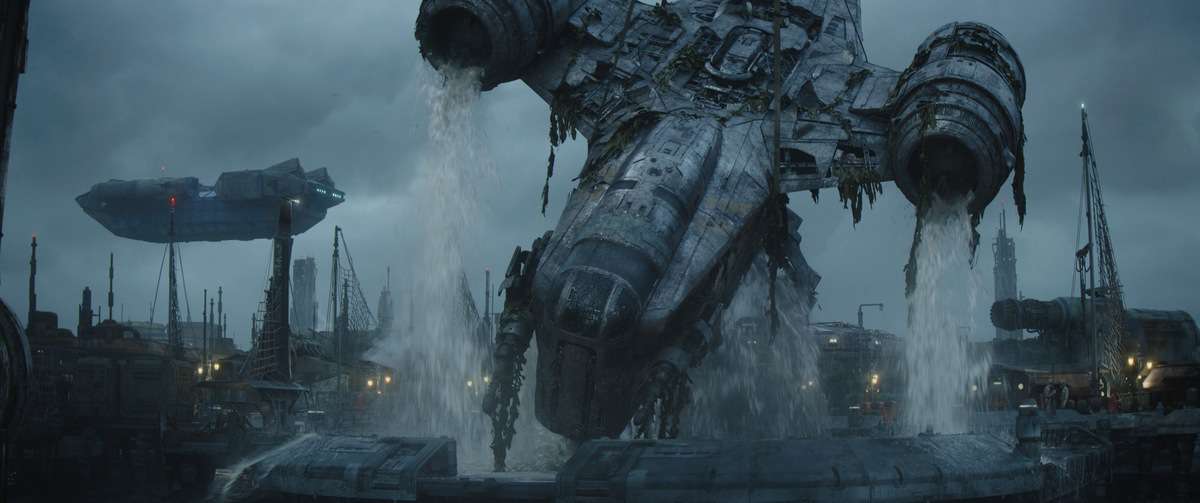
I can’t speak to how Game of Thrones or those other epic shows work, but I’ve worked on network television shows, and we get less than a week for an assembly and a handful of the days with the director, but on this show, the directors are on for previs and obviously shooting and well into post. Even then, into visual effects reviews, it’s that last five percent that makes the show, and they’re there for it.
GERSTEL: It’s like we’re making individual movies. Each one is treated as if it’s a feature from the very beginning process all the way to the end. I’ve worked on films with John Favreau before The Mandalorian, and the process that we did with animatics, animation, and previs was all the same. It felt just like we were making a movie that just happened to be 40 minutes instead of 120 minutes.
HULLFISH: Many of the directors were also writers of the episodes. Are there challenges or advantages to working with a director who was also a writer?
EISEN: The Jedi (Chapter 13) was written and directed by Dave Filoni; his character Ahsoka Tano that he wrote in for the Jedi was a baby of his from The Clone Wars, that he introduced into live-action. He created this character for George Lucas; I think he’d been dreaming for a long time about bringing her to life.
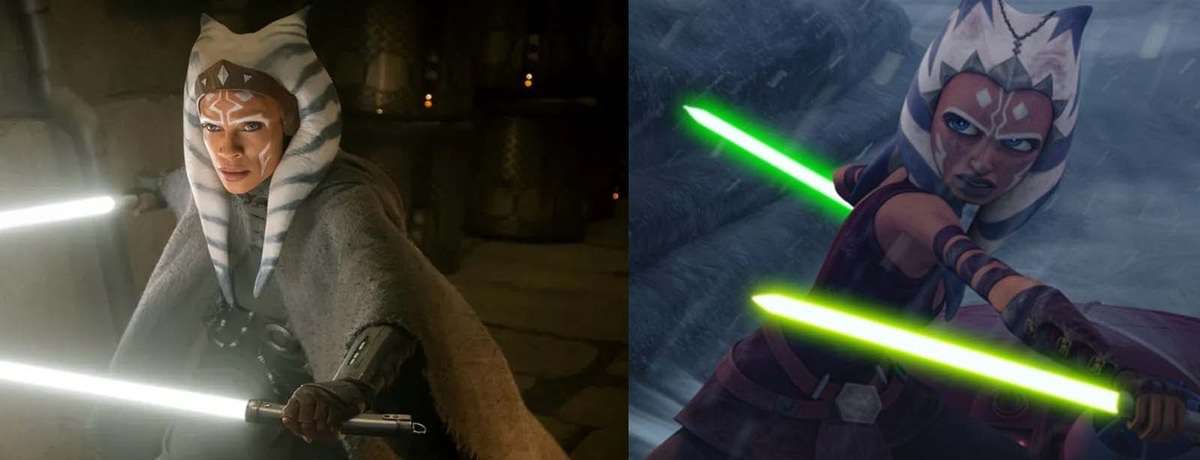
During season one, when we were cutting one of the episodes together that he’d written and directed, he was talking a lot about this reveal and introduction of this character. He put a lot of care and passion into that script, so he knew what he wanted more than a director for hire in terms of how the character was going to behave and look. It was really mapped out.
HULLFISH: I noticed the episodes are all slightly different lengths. Were there any rules about length, or was it whatever length is good for the episode?
GERSTEL: I don’t remember any parameters. It was whatever feels right.
SEIBENICK: There’s never been a discussion about length, It’s only whether or not it feels too long or it feels too much.
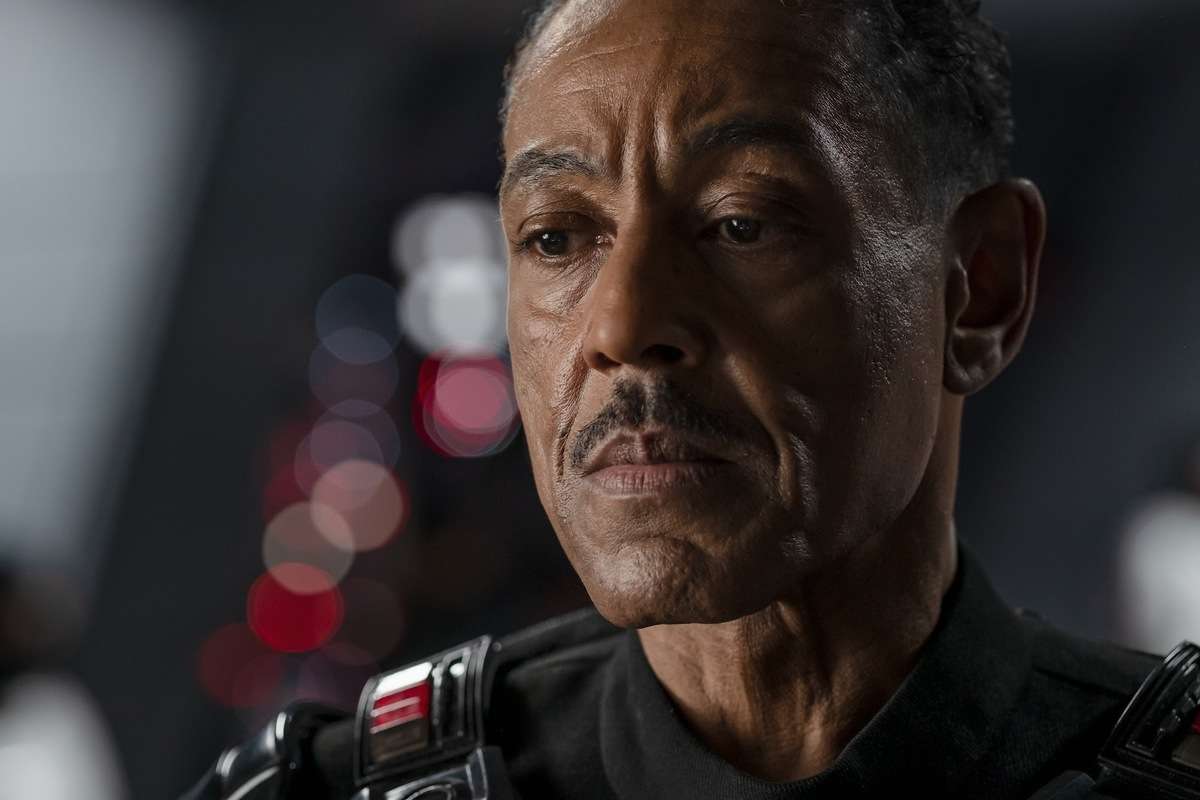
GERSTEL: Right. It’s just asking, “Is the story working?” It’s just like on a movie; we’re not trying to hit a number, which is really nice to not have to be pressured into hitting 22 minutes or whatever number they need.
SEIBENICK: None of the directors or producers are very precious about things. When they watch it, they’re watching it with the eyes of a viewer, and the second they get bored, they say, “It’s okay, we could rework this.” or “This isn’t clear; this goes on too long.” We do have those discussions, but it’s never about the overall length.
When they watch it, they’re watching it with the eyes of a viewer.
EISEN: There was one contractual thing with the studios that we had to deliver a certain amount of minutes overall for a season, but that never played into anything in terms of the length of individual episodes. As Jeff said, it’s whatever feels right is the correct length.
Sometimes a scene doesn’t work, so you can move it to another episode, and it magically fits in, and it doesn’t matter that one episode is three minutes longer and one is three minutes shorter.
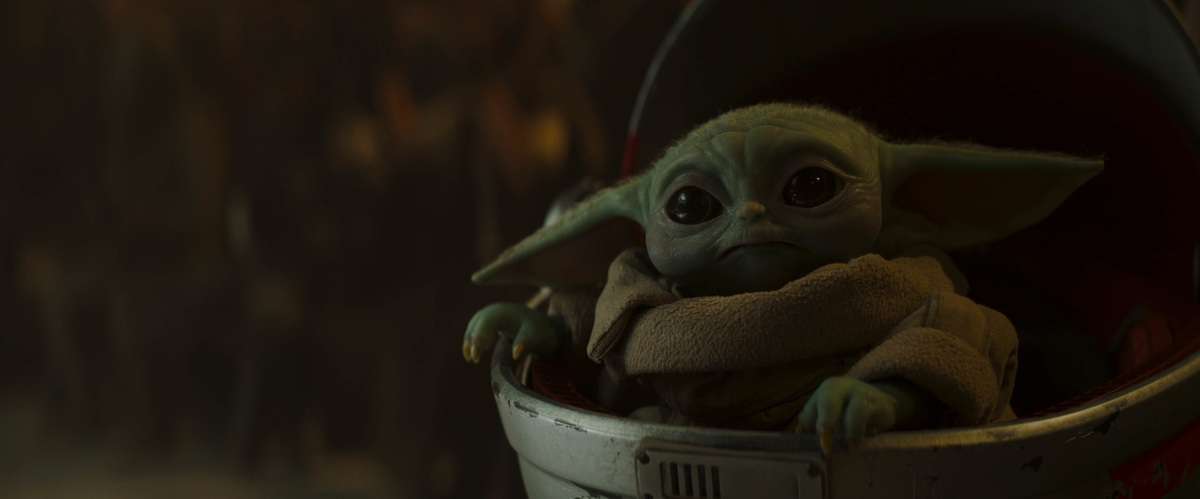
HULLFISH: These shows end up being like 48 to 52 minutes long. How long were the first cuts?
GERSTEL: We are coming from pre-planning a lot of previs; at least in my experience with my cuts, they were not super fat. There were a couple of minutes here and there probably because you’re trying to include everything just to make sure that it’s playing, but because we were so involved so early, the cuts were already evolving before we even shot it.
Having that much lead-time helped the overall process later. We weren’t just chucking things out because they didn’t work anymore; we already had a head start.
EISEN: An interesting phenomenon when you’re cutting previs is because it’s still cartoon actors. They’re not quite doing what their live-action actors do. Even though you’ve honed the script and it’s tight, and it’s working, the end result is the cut gets 25 percent longer once you account for the actors doing their own little things, like how they move and walk, and improvise movements which all happens when we are shooting, but as far as content, they’re usually not that far off.
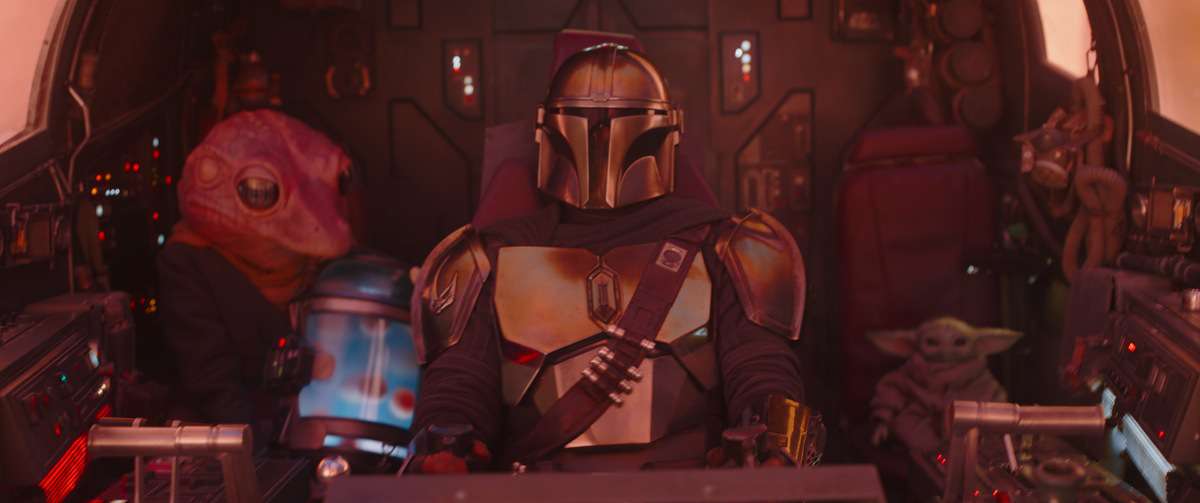
SEIBENICK: I like to make my previs move fairly quickly, especially when I do my Mando performances; when I record my voice and put it in all of the characters, I intentionally read things quickly. That way, it’s not like you’re sitting there watching somebody trying to perform an animated version. We always show the story, but it’s quick.
The only thing that the previs really does on set is to help them see exactly where the camera can go because they’ve designed the previs sets exactly the way they’re going to be in real life, and they have these things called Virtual Scouts where they go in with virtual glasses, and they sit in the virtual set. This way, the director and the producers can sit there and look around, and they can see what everything is going to look like at whatever angle they need, and they all know what is going to happen on the day in terms of geography, but then things change of course.
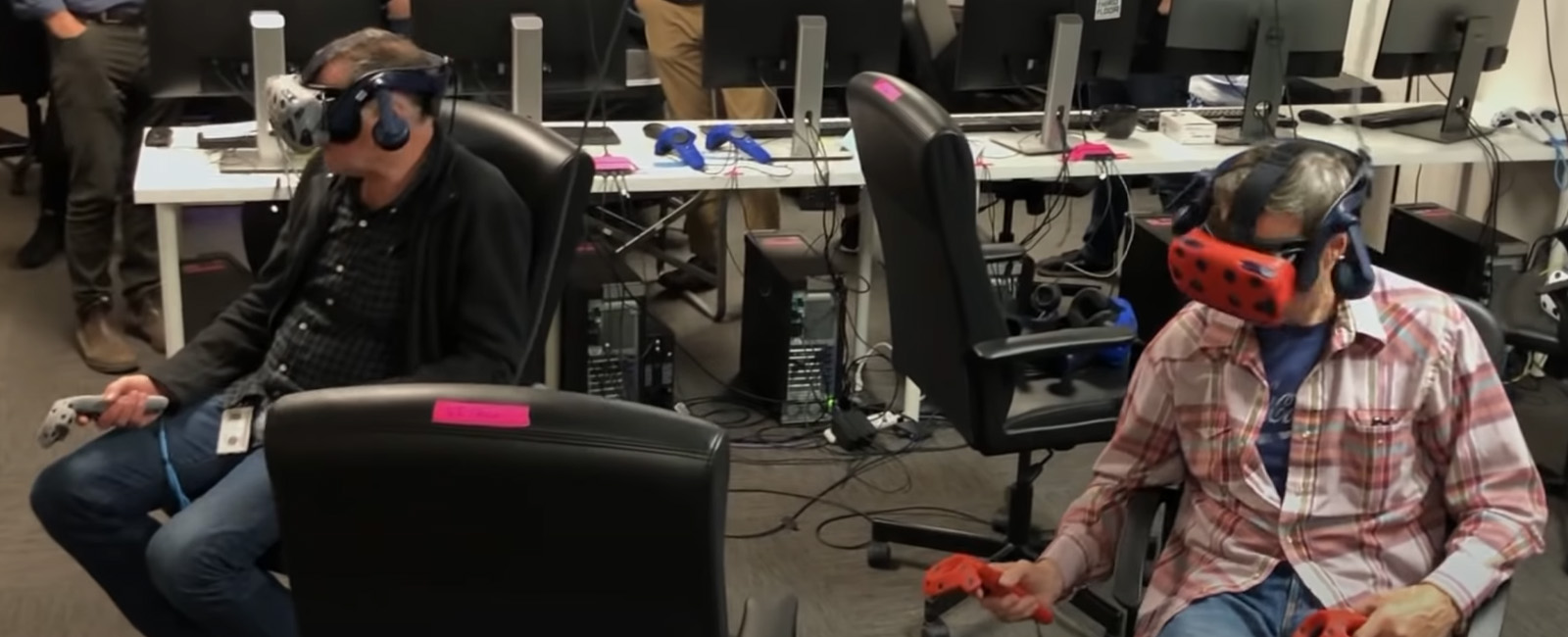
Everything gets more creative and more collaborative, and everything starts moving, and they shoot it differently, and they perform it differently, but when they’re shooting, say, for instance, the actors inside of a cockpit of a spaceship, that’s going down the canyon wall and getting chased by tie fighters. They’re not going to shoot the tie fighters in the canyon wall and the spaceship, but they’re going to shoot the actors. So that’s where the previs comes in handy.
EISEN: On a set, it serves as a shot list for the cameraman and directors; they can look at the cut and know if they got it or need to adjust.
HULLFISH: It’s interesting that you pointed out, somebody can sit in a virtual world that shows you everything, but then when you shoot, it has to be rendered differently, and that’s why the previs has to be done because it’s a higher quality render than what those people see in the virtual glasses.
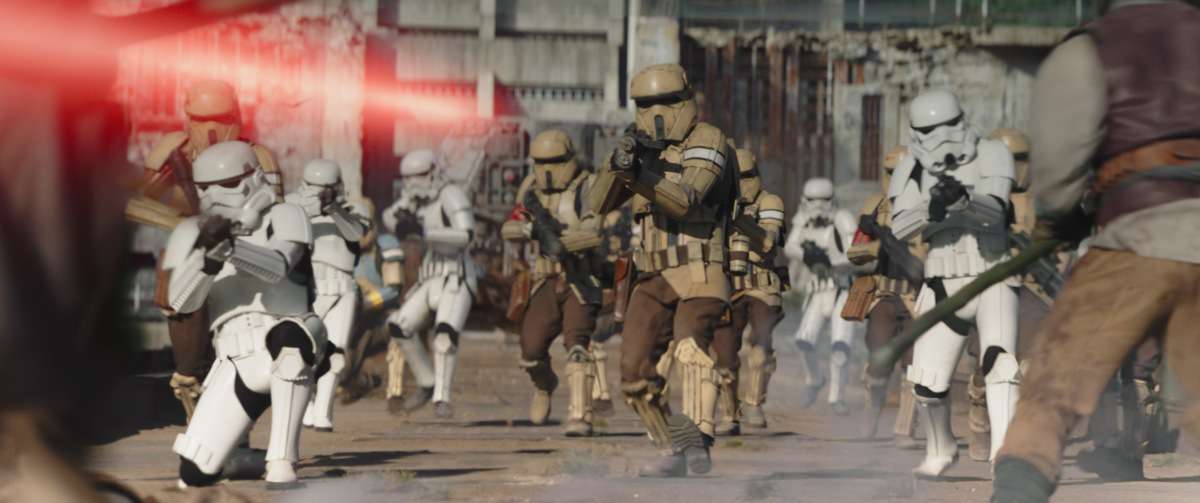
GERSTEL: The wall of The Volume has much more fidelity, So it looks photographic, and it has a certain level of animation in the VR world, so sometimes things are moving and animated, but sometimes it’s just all stills because they haven’t decided what area we will be looking at. Once that’s decided based on the VR scout and the previs edit, it’s uprezzed and animated and made to look as real as possible.
There’s always been an effort to keep as much of the backgrounds that are shot all the way through and not change them or touch them up because if you can make it look great and make it usable, why not?
JESSEN: And as the process matures with The Volume, they are able to manage more animations in the background, so rather than it being like a rear screen projection, there are things happening, like things outside of a cockpit or someone walking on a platform in the background. It’s really fun to watch.
GERSTEL: On The Marshall (Chapter 9), in the background, there are Banthas moving, and you could sit on set and just watch them doing their cycles, and it looked so real. It was amazing.
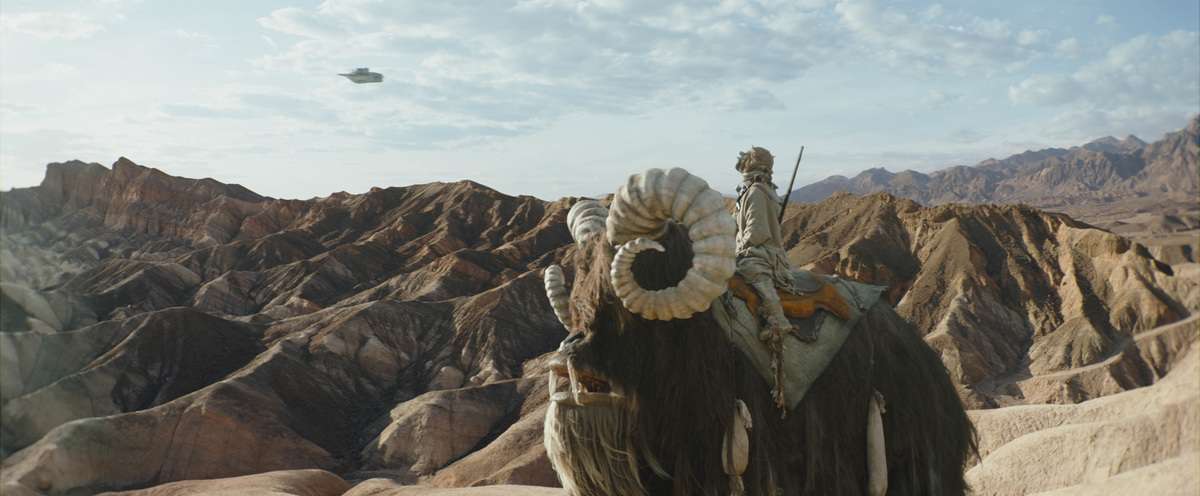
HULLFISH: Who worked with Bryce Dallas Howard? Is there a difference between working with a director who is a director/actress and a director/writer? Do they collaborate differently?
FIRSHEIN: That was Eric and me and coming from that actor side of things, similar to John, she has a really great understanding of what the actors can do, what they can bring, and what they need when they’re on set.
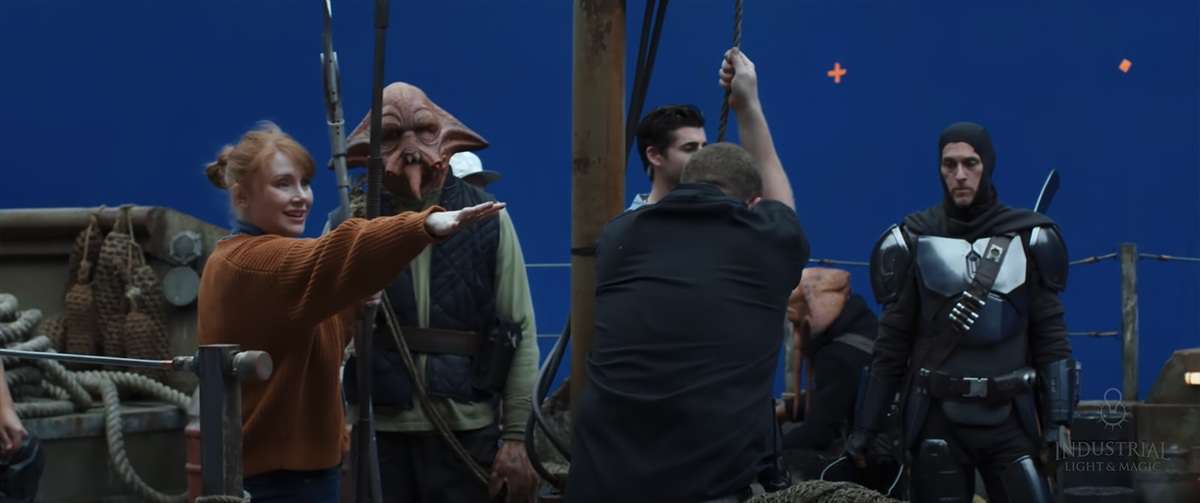
She’s always thinking, from when she gets the initial script through, she is putting little notes in because the previs guys can only go so far with what they do, and she can remind everybody to keep an eye out for things or focus on a kind of emotion. Once they get on set, she’s very open to collaboration with the actors about blocking and what their characters would do or not do. It’s those kinds of things where I think she really excels.
HULLFISH: Does she collaborate with you in post more like the way you might imagine a director collaborates with an actor?
FIRSHEIN: Not in terms of “what’s my motivation for a cut there?” but definitely what’s the motivation of the scene? What are the important beats? But really, it’s the same thing a director coming from that side of things would ask as well.
EISEN: I find Bryce to be extremely hands-on and very detail-oriented. Once she’s in post, she can be very precise about what she wants.
HULLFISH: how does sound design play into the pacing of picture editing?
EISEN: Sound is extremely important, and it’s extremely important in that sequence that I pulled a clip for. It’s the climax of the episode when Mando and Ahsoka have teamed up; it’s the final showdown between Ahsoka and The Magistrate and Mando and her loyal guard Lang in the outer courtyard. Of course, as I talked about earlier, Dave Filoni was very inspired by Kurosawa and the movie Yojimbo in particular, which has a very similar style, so I’m going to talk about visuals as well as sound because that dictated the pace.
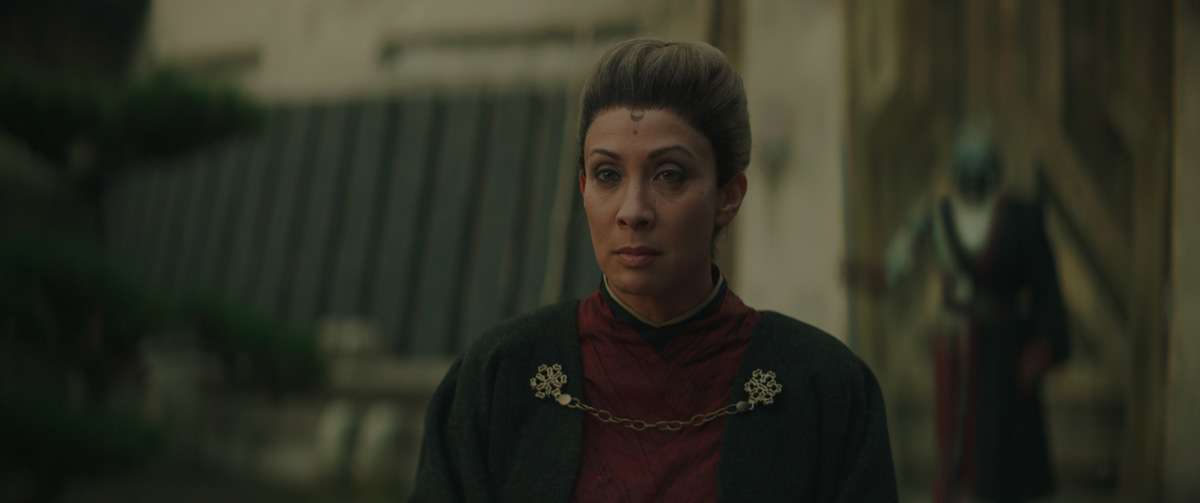
He was not afraid to go with these very big wide shots then let them play out. He let the women walk towards each other in a wide shot without cutting through their faces right away.
It was all about the sound of the laser swords and the beskar hitting each other; it was all about the quietness and the outer courtyard, where all the guys could hear nothing but a little bit of what was going on in that inner courtyard between the two women. That sound had to be played very delicately and with perspective so that we felt that we are with them listening to this fight.
The sound was very precise; how we choreographed or edited the fight to hit certain beats. We were trying to tell a story with sound and the visuals.
HULLFISH: While we are on this scene, talk to me about intercutting between the two fights. Was the intercutting the same as the script?
EISEN: In this particular episode, that fight had not been choreographed yet. It had not been prevised at all. The only part that had been prevised was the outer part with the two guys, which was very much shot and edited, even in previs like a classic Western. Dave wanted me down on the set; this was really the only time on that episode that Dave really needed me down there to cut as they went along so they could see how it was all coming together.
I have to say, on that day, I was only focusing on Ahsoka’s fight; I wasn’t focusing on the intercutting. Between me taking my first stab at it and then John and Dave sitting down with me, weighing in and working things out, it was all collaboration between me and the producers and the director.
HULLFISH: In The Rescue (Chapter 16), The Mandalorian is going on one mission, and the rest of the team is trying to execute another mission at the same time. Let’s talk about the intercutting going on between the people at the bridge at the end and the fight that’s happening on the way to the bridge.
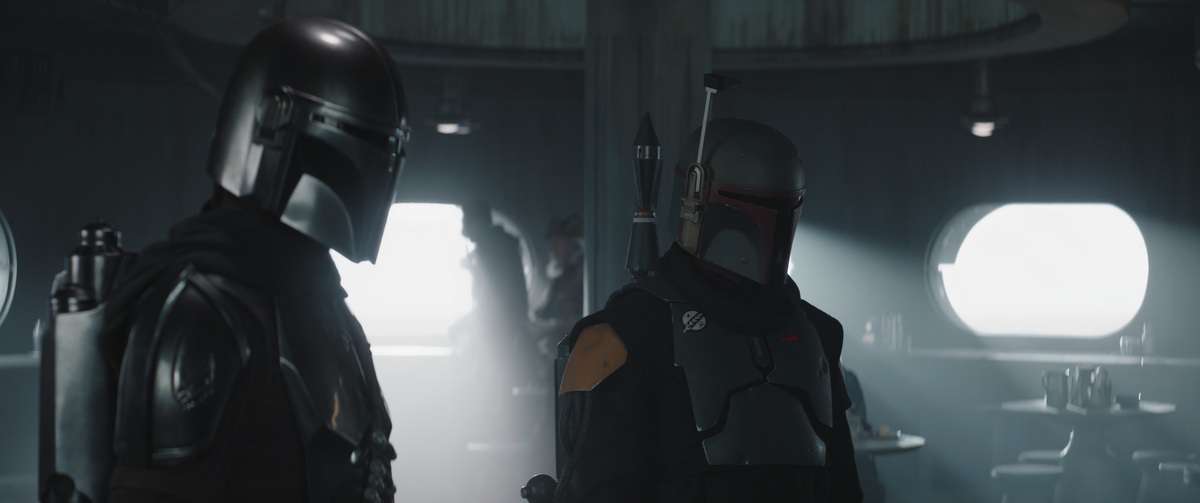
GERSTEL: One of the biggest challenges was to orchestrate this, not only the cross-cutting, but there’s a big reveal of a legacy character at the end of this episode, and that’s a huge moment for the show and for Star Wars in general, but story-wise it’s not the most important part of the episode or season.
The important part is Mando separating from the child and to go with this Jedi. How John wrote the episode and how we structured the rhythm of the cross-cutting had to lead up to that moment. That was something that we were very conscious of in how long we’re on Mando, going to the bridge, how long we’re on the other Mando’s clearing the way when we take a moment with Moff and Mando and their fight.
Then when the X-wing comes in, everything had to unfold one after another. Even just in the last moments where the Jedi is making his way to the bridge, how we reveal that is a slow unfold. You have a hooded face, and then you have a black and white image of a lightsaber. It was all very purposeful and orchestrated to reveal this character.
That, of course, was just the setup for the main emotional thread of the episode, which is him coming to take the kid and the moment between Grogu and Mando, when he willingly takes off his helmet to look face to face. That moment between them was the climax of the episode and the emotional heart of both seasons leading up to that moment.
HULLFISH: Did you guys edit this through the pandemic? How did you manage to edit remotely?
GERSTEL: Technically, we finished shooting three days before the full lockdown. It was crazy. The entire post, once the shooting stopped, was during the pandemic, so we were trying to be innovative, as I’m sure every other show going at the same time.
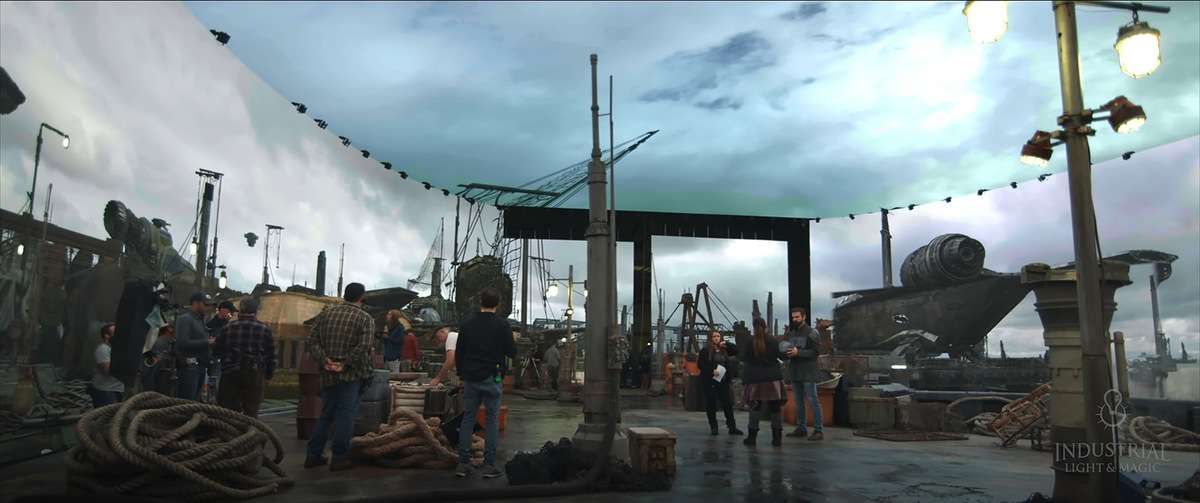
SEIBENICK: And they were telling us to get ready for the long haul. This is going to be forever, and I’m like, “Ah, come on, man, we’re going to be off for two weeks. I don’t even need to bring a drive home. What are you guys talking about?” Meanwhile, almost a year and a half later, I finally got all of my toys and pictures from my office delivered to my house.
Within two days, they had everybody’s houses set up with security equipment and everything we needed to move forward.
EISEN: The IT guys were very proactive; a month before, when people really doubted this would ever happen, they were already getting their ducks in a row and planning out what to do. We really were ready on a dime; within two days, they had everybody’s houses set up with security equipment and everything we needed to move forward. We barely missed a beat, we all fell into the Zoom review world quicker than we liked, but we did it.
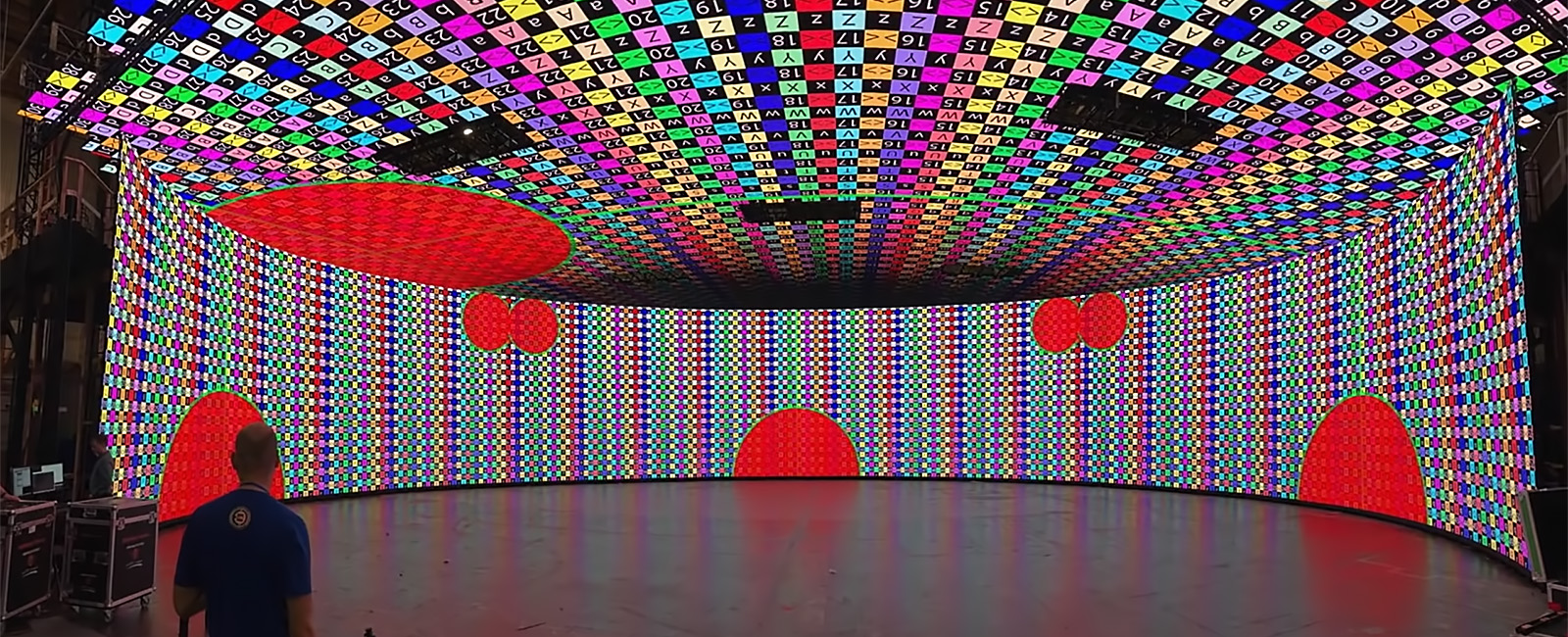
GERSTEL: I don’t think there was a single day that we were down. I remember taking my drive home on Tuesday, and on Wednesday morning, I was at home working.
JESSEN: Big shout out to Zach Vine, who works with us as an assistant. He figured out how to have us all working remotely, and there were a few growing pains, but we were able to work seamlessly using shared projects and bin logging. We got used to working where we have to wait a little bit, but I think everyone appreciated the quick fix.
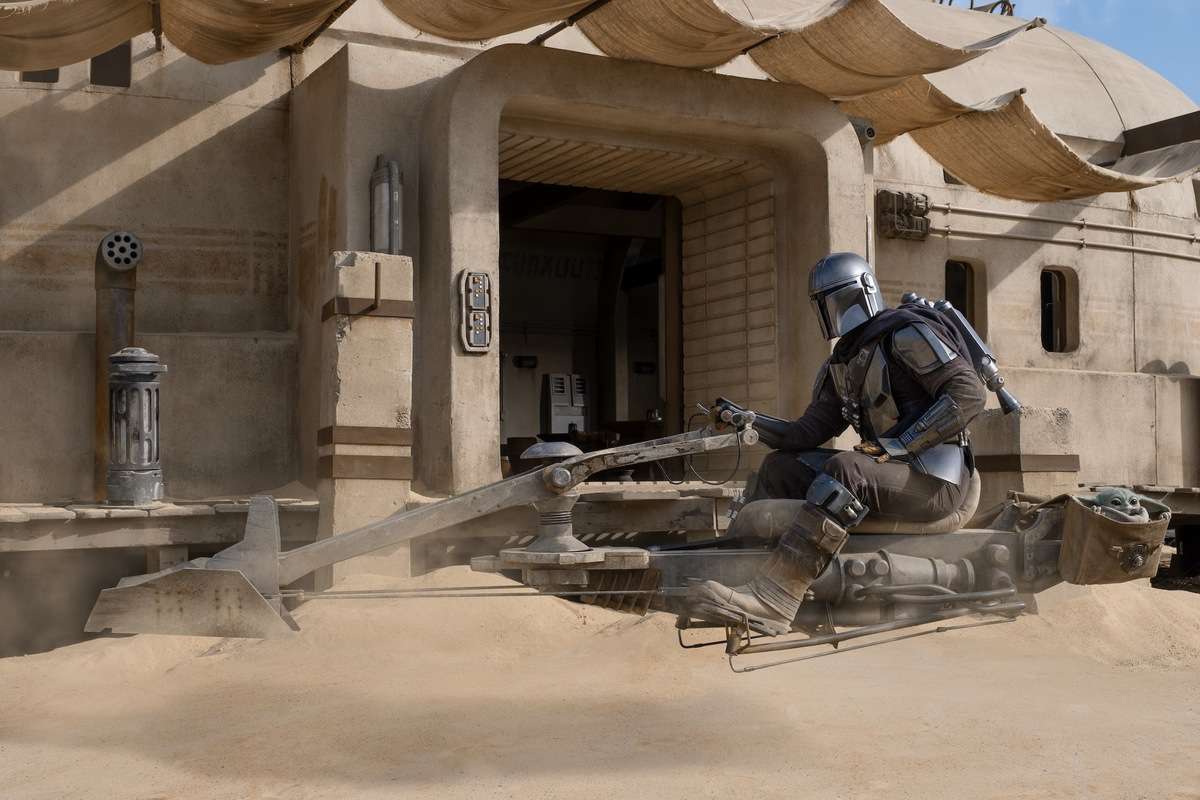
EISEN: I was comparing notes with some friends of mine on other movies at different studios, and we were much further ahead of the curve than they were at the time. Not all the studios were as ready to change on a dime, and so they had longer learning curves and transitions than we did.
GERSTEL: When we first went home, we were like, “Yeah, we’ll be back soon,” but then you quickly realized no, we’re not. We have to do all our visual effects reviews and our final mix review at home, which for our show, in particular, I think was actually a benefit.
It’s a streaming show, which means everybody is seeing it in different environments.
It’s a streaming show, which means everybody is seeing it in different environments. We all had our own headsets that were all sanctioned from Skywalker, so everyone’s listening on the same thing, but we could take them off and listen to it on our own home setups just to hear how it sounds and be able to actually bring that different environment to the mix and not some pristine sound stage that no one would actually hear it on.
HULLFISH: Have any of you guys monitored in anything other than stereo or LCR?
EISEN: I’ve done 7.1. When we did Guardians of the Galaxy Part 2, we were in full-on editing mode for all of our tracks, and all the speakers in every person’s room all separated out. It’s much easier than you think, actually.
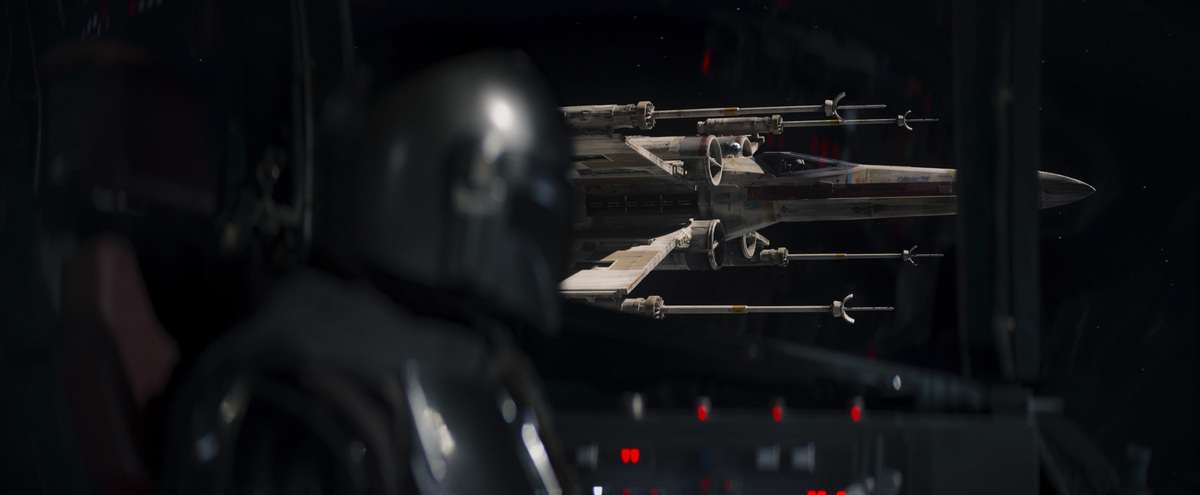
SEIBENICK: I love sound so much, and sound design is one of my favorite things in the world. I love being able to work so closely with the sound designers and editors after my episode is done before we show the directors to get it to where I think it sounds the best because that’s one of my favorite processes, but I’ve never been a big, “let me put all my speakers up and do 5.1”. If I could, I would, but I would waste three times as much time tinkering with the surround sound if I had that opportunity. So now the fact that I can lay down dope sound effects and not worry about it and know that it’s loud and in stereo, I’ll let the professionals handle it because otherwise, I would never get any editing done. I’d spent so much time on the sound.
Working that way is really beneficial, and it takes less time than you might think.
EISEN: It’s a little less important on a show like this, but when you are working on a movie that you know is going to be played on pretty much all exclusively in a theater, and you have things happening behind you, it’s almost part of the storytelling. It really helps to have that, especially when you’re doing screenings for your directors, producers, and even a test audience. Working that way is really beneficial, and it takes less time than you might think.
HULLFISH: Any specifics about the scene in The Believer (Chapter 15) where The Mandalorian takes off his helmet, and they’re in this confrontation in the mess hall. Can you talk about developing that tension?
SEIBENICK: One of my favorite things about that scene is that I got to edit faces. A lot of times on this show, you’re cutting a dude in a mask and a puppet and another dude in a mask, and then maybe you have one person with a face who doesn’t really say as much or have as big a part, or they’re just in the background.
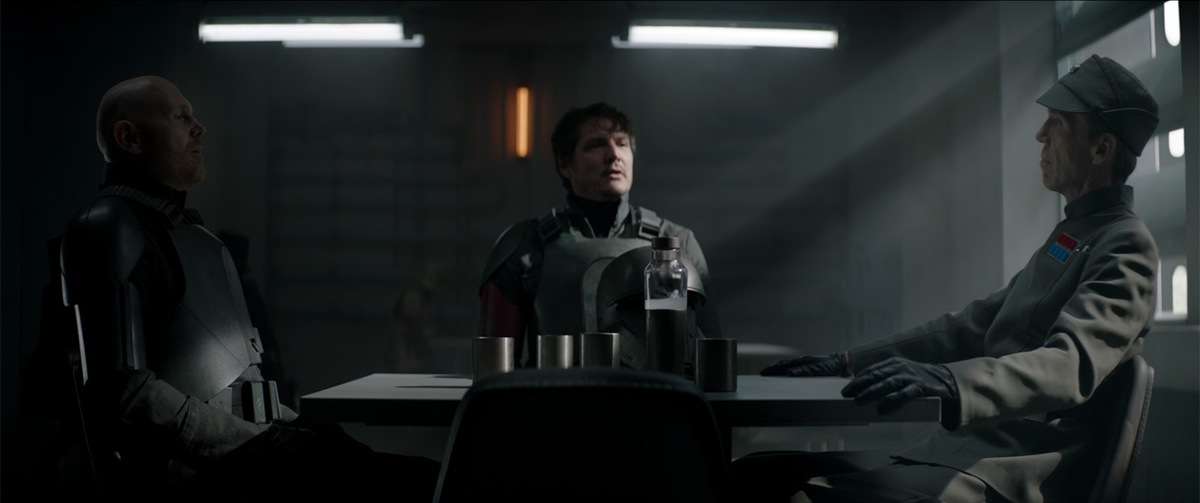
Pedro is, of course, great, and the guy that played Hess (Richard Brake) is terrific; everything he’s in, he’s a badass. Shockingly Bill Burr is incredible, he’s a brilliant dramatic actor, and he nailed it. The fun thing about that is you’ve got this tug of war between what the two guys are saying, and neither of them are trying to poke the other guy too hard, but they’re still trying to poke the other guy.
So because you see faces, you get to cut to Mando, who is essentially the main character of this scene, and you get to see on his face what’s going on between the two guys, and he’s trying to keep it calm. Meanwhile, Bill Burr is still poking the guy, and the other guy’s not taking it. They shot this in such a way that I had a tight and a wide and a medium and a low, you could play with the sizes to say, who’s got the power in the scene and then the slow creeping towards the end, which totally tells you that somebody is about to explode. Playing with a scene like that was so fun because you really can build and manipulate the tension with the timing and the looks and who you cut to, when you cut to them and what size you make them on screen.
That’s why I chose that episode for the submission. I come from a comedy background, so I always love to take the air out of a scene with a little bit of a laugh. It turns out Rick loves that too. We’re both huge fans of Indiana Jones and the Raiders of the Lost Ark action scenes, and there’s always this building tension in every single scene that comes to ahead, and then you take the air out with a joke.
So as soon as Hess gets shot, that Stormtrooper, that stops dead. It’s almost like you get to release your breath before it starts all over again. Even in the previs, one of my favorite things was the sound of that tin can rolling across the floor forever while everybody just looks like, what the hell.
That’s one of my favorite things to do after an action scene builds to tension; you just suck the air out.
HULLFISH: I could see how, because it’s a puppet essentially, that you have to be very careful with finding those perfect moments where it looks realistic, where there’s a sense of emotion. Can you talk to me about looking at that footage of Grogu to find those right moments?
GERSTEL: The puppeteers are pretty incredible, and you are really dealing with another actor. You get dailies of the puppet; It’s not just a static thing that you figure out later. They’re making a motion; they’re moving the eyes, they’re moving the face, the ears, everything is going.
You’re looking for the best moments, for example, on the scene, at the end of The Rescue where Mando was with the kid and he’s in his arms, and Grogu looks at Mando, the kid is bringing it just as much as Pedro is and it’s great to be able to cut with that emotion footage. You’re not trying to imagine it; you’re actually seeing it, a testament to the puppeteers that are operating it.
EISEN: In season one, people would ask me how much of it is CGI and how much of it is puppet, and they’re expecting me to say it’s mostly CG, but I would say it’s like, it’s 99 percent puppet. If it had to do something that you just couldn’t do, they would have some CG enhancement, perhaps, but what you’re looking at on the show is a live puppet.
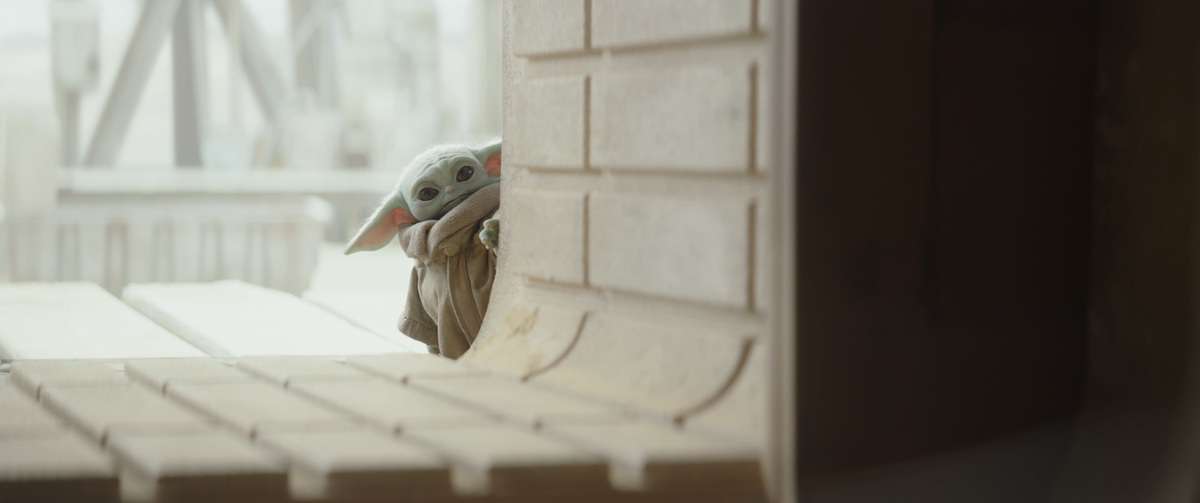
GERSTEL: We tried to stay away from things that it couldn’t do; there was an effort to not have it run across the room because it couldn’t do that. So you want it to be as real as it could be.
HULLFISH: Thank you so much. I know you guys are all editing and have other projects that you’ve got to get to. Thanks for your time.

